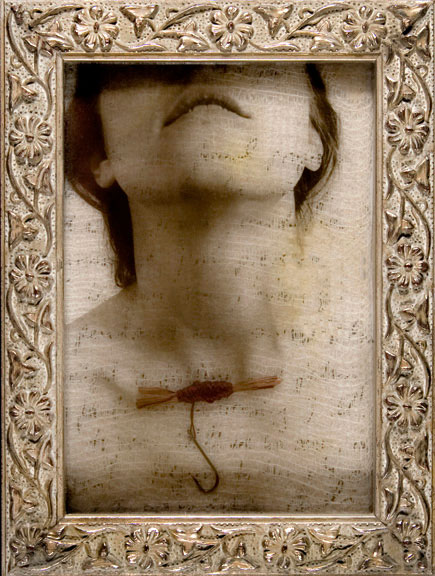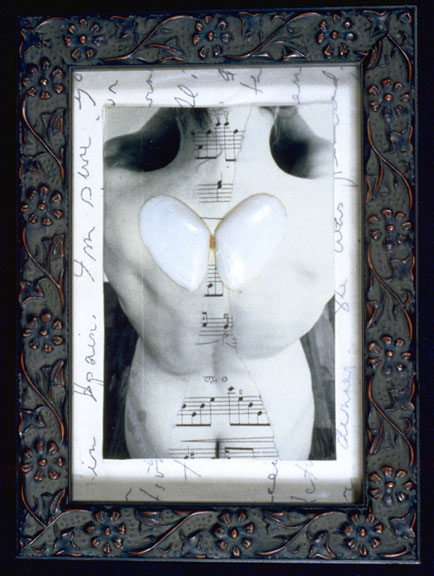MAPPING THE BODY
I am interested in what lies beneath the surface of the skin. It is not the physical structures that concern me – ligaments, organs, bones. Rather it is the emotions and experiences that are imprinted on our bodies – the places we travel, the music we listen to, the letters we read and write. Our past informs our cells.
As early mapmakers used pen and ink to chart the surface of the world, I use collage to navigate the inner world. I print images of the body on kodalith, because black and white transparencies render the surface invisible. I collage in layers using real objects. I delight in insect wings, needles, fishhooks, matches, traintracks, and door hinges because they are so very tactile and convey multiple meanings.
Many of the pieces in this series were inspired by personal history. However, my hope has always been that the work transcends its origins and speaks to something larger than myself, to something universal. For this reason, I encourage viewers to discover their own unique reading of each piece.
Please click on the thumbnails below to see larger images and titles.
Please scroll down to the bottom to learn about the technical process.
Technical Notes
My medium is kodalith and mixed media collage. I fell in love with kodalith (black and white positive film), because this material renders the image transparent. Where it would be white in a regular black and white photograph, it is clear. One can then peer through the photograph in search of what lies beneath. In my work, I build layers of information using old maps, letters, sheet music, torn paper, gauze, and lace. I then add objects either below or above the surface of the image. Butterfly wings, train tracks, fishhooks, needles and thread appeal to me because they are so very tactile and contain multiple meanings. The piece is completed upon framing, for the frame not only protects the fragile collage, but becomes part of the collage itself.
I create both unique and editioned pieces. Each collage in an edition is made by hand, and so there are variations from edition to edition. Edition sizes may be as small as two or as large as forty, but most often are editions of either five or ten.

















